The idea of cloud gaming has been floating around since the widespread adoption of broadband. Along with it came the promise of never having to buy fresh hardware, gaming mobility, and abandoning physical media. Sadly, the concept slowly gave way to a slew of products and services that seemed to languish in development purgatory. Launched last summer, OnLive has been one of a tiny handful of companies to venture into cloud gaming with any kind of success. With the winter release of their MicroConsole hardware, it’s time to take a look at how their current overall experience stacks up against more traditional gaming mediums.
A Quick Refresher
OnLive, like existing and forthcoming services, is a cloud-based gaming platform. This means that the media on which the game is stored and the hardware to run it exists only at OnLive’s server farms. At the moment, there are two methods to access OnLive: the lightweight desktop client, responsible for relaying controller input and using simple 2D hardware acceleration to upscale and display the returning video stream and the MicroConsole, which performs the exact same function but ports the video stream from the network straight to HDMI, bypassing the need for a computer entirely.
Console
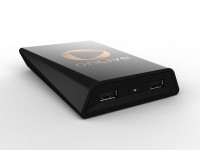 The MicroConsole is a strikingly small device. At roughly the size of a large wallet, it makes the Wii look like an original Xbox; an observation compounded by the notion that it’s designed to give a similar experience to well established gaming hardware. The build quality of the MicroConsole is excellent especially for a first-generation product. The exterior is primarily finished off in a glossy black that looks at home in any home theater setup. The HDMI, audio connections, power and ethernet are routed from the back. The power button and two USB ports sit at the front. The only real issue is that the power button could stand to be a bit bigger with a more prominent power LED. The system has no Wi-Fi due to latency concerns, which will indeed turn away a segment of consumers. Clearly, Wi-Fi latency is a issue OnLive needs improve not only to avoid deterring customers, but to enter the mobile space. It should be noted that the desktop client will work over Wi-Fi while taking a small performance hit. Besides the included wireless controller, the MicroConsole supports Xbox360-compatible USB gamepads as well as Bluetooth headsets. The system also had no issues recognizing USB mice, keyboards, or a Logitech unifying receiver.
The MicroConsole is a strikingly small device. At roughly the size of a large wallet, it makes the Wii look like an original Xbox; an observation compounded by the notion that it’s designed to give a similar experience to well established gaming hardware. The build quality of the MicroConsole is excellent especially for a first-generation product. The exterior is primarily finished off in a glossy black that looks at home in any home theater setup. The HDMI, audio connections, power and ethernet are routed from the back. The power button and two USB ports sit at the front. The only real issue is that the power button could stand to be a bit bigger with a more prominent power LED. The system has no Wi-Fi due to latency concerns, which will indeed turn away a segment of consumers. Clearly, Wi-Fi latency is a issue OnLive needs improve not only to avoid deterring customers, but to enter the mobile space. It should be noted that the desktop client will work over Wi-Fi while taking a small performance hit. Besides the included wireless controller, the MicroConsole supports Xbox360-compatible USB gamepads as well as Bluetooth headsets. The system also had no issues recognizing USB mice, keyboards, or a Logitech unifying receiver.
Controller
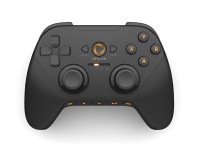 The best way to describe the OnLive wireless controller is the ergonomics of the Xbox360 gamepad with the front layout of a DualShock 3. The hardware buttons and triggers have good tactile feedback and even follow the XYAB lettering of the 360. The analog sticks have very fluid motion and possess a satisfying rubberized finish, matching the other buttons in quality. The shoulder buttons, on the other hand, feel somewhat loose and flimsy compared with the other button hardware. Beneath the analog sticks are the media control buttons which will be discussed later. I have to commend OnLive for making these buttons flush with the surrounding plastic; keeping them unobtrusive to the function and aesthetic of the controller. Most of the unit is encased in a matte-textured plastic finish which gives good grip. The front button area, but not the buttons themselves, employs the same gloss plastic as the console. The fingerprints picked up here usually aren’t noticable. Power comes from either an included rechargeable battery pack, getting juice through the console’s front USB, or from two AAs.
The best way to describe the OnLive wireless controller is the ergonomics of the Xbox360 gamepad with the front layout of a DualShock 3. The hardware buttons and triggers have good tactile feedback and even follow the XYAB lettering of the 360. The analog sticks have very fluid motion and possess a satisfying rubberized finish, matching the other buttons in quality. The shoulder buttons, on the other hand, feel somewhat loose and flimsy compared with the other button hardware. Beneath the analog sticks are the media control buttons which will be discussed later. I have to commend OnLive for making these buttons flush with the surrounding plastic; keeping them unobtrusive to the function and aesthetic of the controller. Most of the unit is encased in a matte-textured plastic finish which gives good grip. The front button area, but not the buttons themselves, employs the same gloss plastic as the console. The fingerprints picked up here usually aren’t noticable. Power comes from either an included rechargeable battery pack, getting juice through the console’s front USB, or from two AAs.
Overall, the controller’s best quality is that it’s unremarkable in both form and function. If the purpose of the MicroConsole is to replicate the experience of a Xbox 360 or PS3, then controller best reinforces that idea by being a familiar and effective and undifferentiated piece of interface hardware.
Service and Experience
The OnLive user interface is simple and relatively well designed. The menu system consists mainly of tiles with the exception of game lists which show expanded information like descriptions and Metacritic ratings. Navigation is quick and intuitive as it should be. One thing to note is that virtually every page of the user interface has some variety of full motion video of user-recorded “Brag Clips” or live game streams and really helps emphasize the cloud nature of the system.This is all besides the main purpose of OnLive which is to play games, a feat executed with mixed success. I’ll readily admit that I was one of those doubtful of cloud gaming, citing latency and audio/visual quality issues keeping services like OnLive from ever hitting the mainstream. It’s very clear upon using the service that the engineers working on OnLive and the MicroConsole have invested a great deal of effort to overcome these issues. I’ll just go ahead and say that players looking for a full HD resolution experience at max settings will want to look elsewhere. Most titles will run at 720p or 1080i at a very playable minimum of around 30fps. The graphics quality, unfortunately, will vary quite a bit depending on the title. For example H.A.W.X. 2 and Batman: Arkham Asylum both have textures, lighting, and shadows that make them virtually indistinguishable from their console or PC counterparts. On the other hand, more visually intensive games like Homefront and Splinter Cell: Conviction occasionally has inconsistent textures, lighting, and clipping issues. There are many factors to the graphical reproduction of these games, including but not limited to the user’s bandwidth, OnLive server hardware, other users etc. While OnLive is working on ways to improve the graphical capability of their systems for upcoming and existing titles, I doubt anyone will be buying titles for the potential for the visuals to look good.
The other, and arguably more crucial issue with cloud gaming is latency. Again, this is another area where OnLive has made amazing strides but the execution leaves much to be desired. Quoting latency times is about as useful as quoting ISP thouroghput: It’ll give you an idea of what to expect but real world performance must be approached on a case-by-case basis. The latency and bandwidth from your ISP will have as big of an impact on the experience as anything OnLive can do on their end. In testing, 802.11n from a router not 5 feet away with line of sight created such a big hit to latency and graphical reproduction on the desktop client that it’s no surprise OnLive made the MicroConsole an ethernet-only affair.Certain genres seem to suffer more than others due to latency not because of being computationally intensive but that some styles of gameplay make controller lag feel more pronounced. Games requiring aiming movements with consistent visual focus such as first-person shooters and racing titles seemed to suffer the most from this effect. For the same reason, World Of Goo was also less satisfying to play. Using a keyboard and mouse in these games didn’t improve the experience at all. On the other hand, most third-person action titles such as Batman: Arkham Asylum and Tomb Raider: Legend, while having a hint of lag, felt every bit the console experience in visual quality and responsiveness.
Most if not all of the titles offered by OnLive are PC games and users will be able to interact just fine through the desktop client. Unfortunately, this presents occasional issues when the same games are played on the MicroConsole with the gamepad. F.E.A.R. 2 for example prompts users to press “E” to perform some function in the game when there is no “E” key on the gamepad. This is a minor issue that affects a small portion of games, but the impact is jarring and forces the player to figure out the corresponding gamepad button before proceeding. It’s an unwelcomed vestige of the PC side of things especially considering the lengths OnLive has gone through to remove inherent graphics settings within games and optimizing them for streamed play.
Social Features
OnLive offers multiplayer support for all capable titles but because it’s a closed community, you’ll only be playing with other OnLive users and can’t reach players on other platforms. You can, of course, friend other OnLive players from multiplayer matches and communicate through messages. One of OnLive’s more interesting social features enabled by cloud computing is the ability to watch other people play live games in “Arena” mode. Privacy controls notwithstanding, you can give them a thumbs up, thumbs down, or friend them as they play. Another interesting feature is the ability to record and play back “Brag Clips” of game footage at any time with the media controls on the gamepad. These cheesy-sounding video clips show up on that game’s profile page for other players to and view. Luckily, these viewing modes are available to any user whether or not they have purchased the access to play the game.Pricing
OnLive’s pricing structure will be different depending on which games you want to play. It cost nothing to create an account and log in through their desktop client. Most of their games even have a brief playable demo. OnLive maintains their “Playpack”, a steadily expanding library of games for $10/month with full complete access. These games are usually older hits like Bioshock and low licensing-cost titles like Battle: LA. It’s a pretty intriguing offer since you could get through most of the titles you want in a month or two and terminate/resume your subscription at your discretion. More recent releases, however, are sold individually and priced closely with their console and PC counterparts. The full price option will give full access to the game for as long as the OnLive service remains operational while more inexpensive 3 and 5 day passes allow for shorter periods of access at a much lower cost. To those of you that scoff at the idea of paying full price for an OnLive version when the Xbox, PS3, or PC versions can be shared with friends and resold, I’d like to remind you that you’re not simply paying for the rights to play the game but the infrastructure to run the game and the flexibility to play it wherever OnLive can put a interface client. Players who want to move OnLive to an HDTV can pick up the MicroConsole and wireless controller bundle for $100.The Final Word
OnLive will surprise most gamers with the quality of experience they’ve created. Not only is the MicroConsole and controller very good but most titles end up being quite playable with a properly configured setup. Freebies like demos for nearly every title and desktop access make the service incredibly compelling to try. At the very least, gamers can play and decide first hand if the library and experience are right for them at no cost. The MicroConsole, as good as it is, serves only to move that experience to the TV. On a side note, server-side processing opens up entirely new possibilities like bringing low cost desktop virtualization, browser support, and on-demand video streaming to HDTVs but perhaps that’s looking too far forward. OnLive isn’t a perfect system but it does show us a possible future where we’ll play all our games from the cloud. Just like the console and PC platforms that came before it though, OnLive’s lasting success will hinge on their ability to get publishers to commit desirable releases and the server hardware to support them.

























































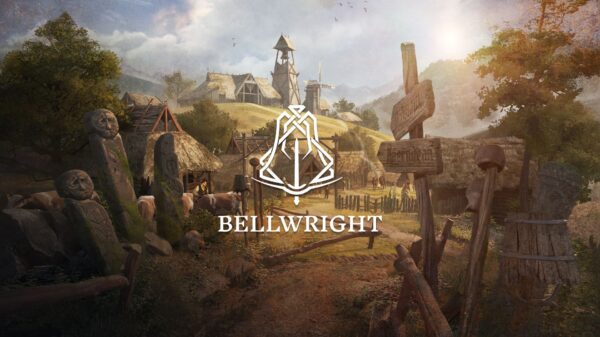


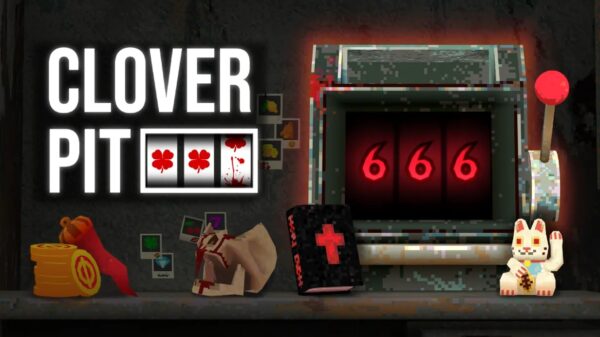



































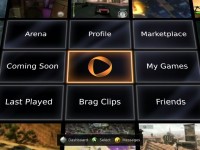


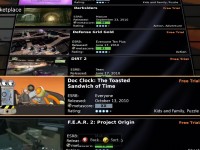
Pingback: 4/11/11 – OnLive Review – monstervine.com | Talk OnLive